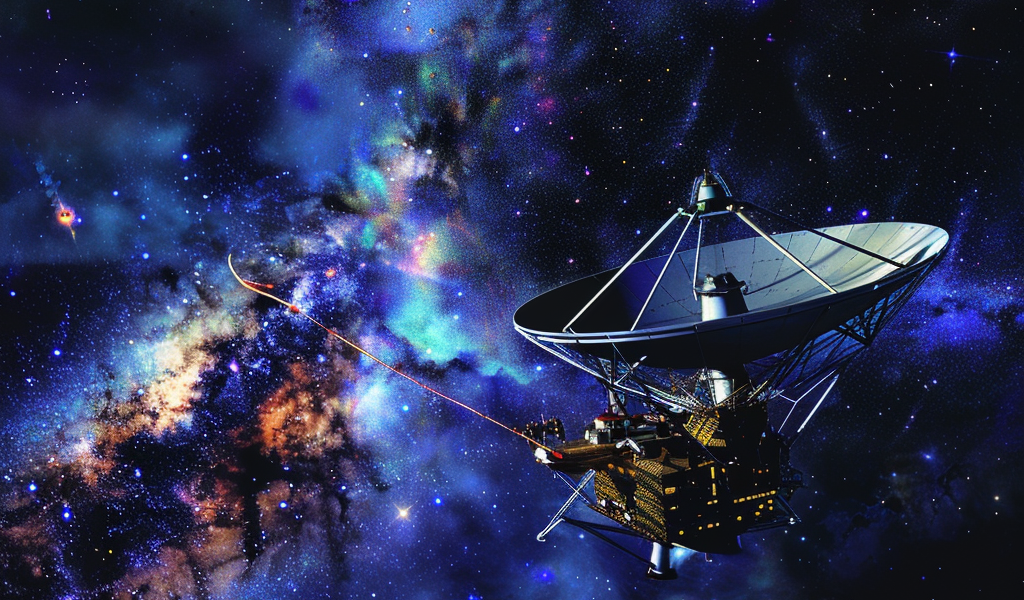Nasa’s Voyager 2 Takes a Step Back in Science Operations
NASA’s Voyager 2 spacecraft, a pioneer in interstellar exploration, has recently undergone a significant operational change as mission engineers have turned off its plasma science instrument. This decision comes as the spacecraft’s electrical power supply continues to diminish, prompting the team to prioritize essential scientific functions and maintain the probe’s longevity.
Launched in August 1977, Voyager 2 has traveled an astonishing distance of over 12.8 billion miles (20.5 billion kilometers) from Earth. Despite the vast expanse of space it has covered, the spacecraft remains active, utilizing four of its ten scientific instruments to study the region beyond our heliosphere. This protective bubble, created by the Sun’s particles and magnetic fields, is where Voyager 2 is currently conducting its groundbreaking research.
The plasma science instrument, which has been instrumental in measuring the flow and amount of plasma—electrically charged atoms—has faced limitations in recent years. Due to its orientation, it has struggled to collect data effectively as it relates to the plasma flowing in interstellar space. As a result, the mission team has opted to deactivate this instrument to extend the operational life of the spacecraft and ensure that at least one science instrument remains functional into the 2030s.
NASA’s decision to turn off the plasma science instrument reflects a careful balancing act. The Voyager mission team has been diligent in conserving power by shutting down non-essential systems over the years. After the twin Voyager spacecraft completed their exploration of the giant planets in the 1980s, many instruments that were not relevant to interstellar studies were powered down, providing additional energy reserves. In recent years, however, the power supply has become increasingly constrained, leading to the current adjustments.
The spacecraft is powered by decaying plutonium, which results in a loss of approximately 4 watts of power each year. To mitigate the impact of this decline, engineers have implemented various strategies, including modifications to the voltage monitoring system of Voyager 2. These measures are designed to prolong the operational capabilities of the spacecraft and maximize the scientific data that can be collected.
On September 26, a command was issued to deactivate the plasma science instrument. The signal, sent via NASA’s Deep Space Network, took 19 hours to reach Voyager 2, with an additional 19 hours required for the response to return to Earth. This lengthy communication process underscores the challenges of managing operations for a spacecraft located billions of miles away.
Mission engineers closely monitor all modifications made to the 47-year-old spacecraft’s operations. They have confirmed that the switch-off command was executed smoothly, and Voyager 2 continues to function normally. This level of oversight is crucial, as the team aims to avoid any unintended secondary effects from the operational changes.
The plasma science instrument has played a pivotal role in previous discoveries, including its critical function in determining that Voyager 2 had exited the heliosphere. The boundary between the heliosphere and interstellar space is characterized by distinct changes in atomic and particle behavior, as well as variations in magnetic fields. Instruments aboard the Voyager probes are uniquely capable of detecting these shifts, providing invaluable data about the nature of our solar system’s outer reaches.
Despite the recent deactivation of the plasma science instrument, Voyager 2 remains a testament to human ingenuity and the quest for knowledge beyond our planet. The spacecraft continues to gather data from the interstellar medium, contributing to our understanding of the universe long after its initial mission objectives were completed.
As NASA navigates the complexities of deep-space exploration, the Voyager mission stands as a beacon of scientific achievement. The careful management of power resources and the strategic decision-making involved in maintaining operational instruments reflect a commitment to pushing the boundaries of what is known about our cosmos.
Voyager 2’s journey is a reminder of the enduring spirit of exploration and the importance of safeguarding our technological marvels as they venture into the unknown. With its remaining instruments, the probe will continue to provide insights that enrich our understanding of the interstellar environment, paving the way for future discoveries in the vast expanse of space.





